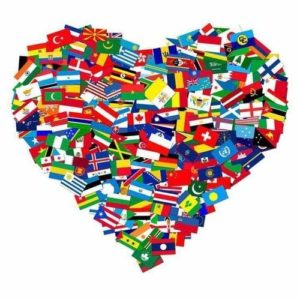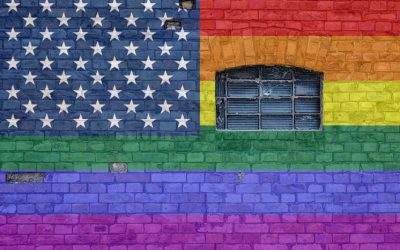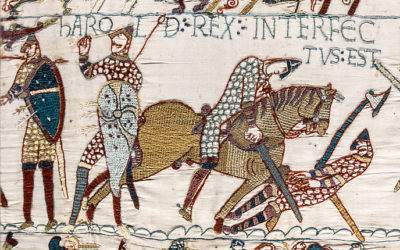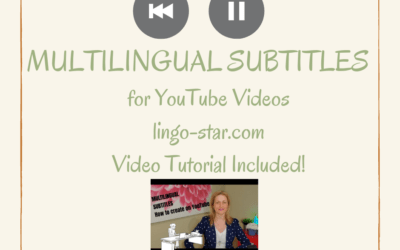Read our Translation Blog
Get the latest fun and facts from the language industry with our blog!
Need advice on website translation and localization?
Browse our ONLINE SHOP for ebooks on how to translate a website!
LingoStar’s Blog 
Welcome to LingoStar’s blog! On this page, you can find a lot of interesting and useful information about the translation industry. Explore topics on website translation and localization and how successful localization can influence your business to help your company grow and go global.
Language Blog Topics
On this blog, you can also learn about professional translators and interpreters, multilingual search engine optimization (SEO), the importance of socializing and networking and translators’ professional ethics. Quite often we write posts about the languages of the world, other cultures, and their traditions. Not only do translators convert texts from a source language to a target language, but they also help people communicate with each other, help establish international contacts, and are often prominent figures in the social, economic, and political life. Lastly, of course, we want you to have fun, so on our blog, you can find many posts that will entertain you and, hopefully, make you smile!
We hope you enjoy our blog and discover a lot of interesting things!
The Language of Women | Does Language Shape Our Thoughts About Gender?
The Language of Women As A Secret Language The language we speak shapes our thoughts about gender and our perception of reality. Many linguistic studies say that there are several types of languages in the world, including the language of women. There are natural languages (or human languages), formal languages, and artificial languages. The latter are often used and created either for amusement or for practical purposes, e.g. Esperanto. Among these are the languages created by women and for women. Mothers are key figures in children’s language development, so much so that we speak about a “mother tongue” to identify a native speaker of a particular language. However, from a linguistic point of view, there is no “female language”, “language of women” or “natural female language”. The Language of Women and Prejudices We also have to consider that our language reflects our social prejudices. What happens if none of the existing languages enable women to express the feelings and emotions inherent to them? What happens if women can’t express the way they feel and think because their language doesn’t contain the right words to convey their thoughts? Or because their language describes and reflects a patriarchal society? Think about how you use your language and whether it’s more geared towards how men or how women express themselves. Native Tongue As A Language of Women, By Suzette Haden Elgin The American linguist and writer Suzette Haden Elgin addressed this topic in the 80’s. She theorized that if women had their own language to express their opinions, they might represent reality in a very different way than when men talk. To... read moreGender Neutrality – How to Achieve a Bias-Free Environment
Gender Neutrality In Everyday Life Set in 1961, Hidden Figures is a film about the true story of a team of African-American mathematicians in which gender and racial distinction are broken down in favour of neutrality. The main protagonist, Katherine Johnson, is a talented woman who is hired to work for NASA. However, she works in a white, male-dominated environment, where the toilets for coloured women are in a completely different building from the one where she works. For this reason, every day she has to go back and forth between the two, meaning she’s often absent from her desk. When her boss demands an explanation for her constant absenteeism, Katherine, filled with indignation, makes a moving speech about how the racially divided, male-dominated society in which they live is impeding her from doing a good job. In agreement, her boss destroys the “colored ladies room” sign outside the toilets to stop the segregation. Hidden Figures might be set in the early sixties but gender and racial discrimination are still present in our lives. The difference is that today is not just about the distinction between male and female. This happens because we live in a gender-fluid society where things are far more complex. In this blog post, we will explore what is gender neutrality and how it affects languages. The Way Gendered Languages Shape Our World Historically, the masculine gender has always been the default gender for describing situations where both men and women are present. Indeed, with respect to gender, we can distinguish three types of languages: Gendered languages like Spanish, French and Italian, where nouns and... read moreBeauty and Culture – The Hurdles in Translating for the Cosmetics Industry
The Relationship Between Beauty and Culture Carnival is upon us, and we can’t help but think about all the beautiful clothes and makeup used on this occasion. Carnival is held in various parts of the world and is packed with cultural traditions. What is the relationship between beauty and culture? How does the concept of beauty change across different cultures? And in what ways does it affect the world of translation? Cultural influences guide our perception of beauty, which takes on a different meaning not only across different countries but also across different ages and eras. Indeed, Americans in the fifties conceived beauty differently from today. In most European countries, a slim figure with flawless skin is the ideal of beauty, whereas in Africa, a larger figure is considered beautiful. To achieve this ideal of beauty, women (and, most recently, also men) have been experimenting with cosmetics and beauty aids for a long time. Some people go to great lengths to alter their appearance and conform with what society considers beautiful. Religion, as part of a culture, also has its influence on beauty. In Hinduism for example, they portray Goddesses as beautiful, making beauty a godly quality. In the Muslim religion, instead, they abhor things like nudity and women must wear a veil to hide their face from everyone except their husbands. Today’s Ideals of Beauty and Culture Pride However, today’s ideals of beauty are far more inclusive than they were in the past. Thanks to social media, in particular Instagram, a lot of celebrities, whose beauty is not the “standard” one, encourage women and teenagers to be proud... read moreCan We Translate Culture?
It is undeniable that every language brings with it not only a grammar code but also an entire culture. We do not translate culture only by directly using a language. We also apply various forms of intercultural communication. This is why it is important to have an intercultural approach when translating culture from one language to another. Intercultural Translation – Translate Culture through Words Of course, there are languages and industry fields where direct translation prevails, such as information technology or science. But in other fields, we cannot ignore the relevance of intercultural aspects. There are some intercultural words, or rather, words that influence and shape realities unknown in other language groups, or words shared with other languages but used for a different concept. For example, a lot of English words are used in Italian with different meanings. It’s the case of mister, which means football coach, or scotch, used to designate adhesive tape. The Use of Realia To translate culture means to convert a text through words called realia (personal names, places, names of food, etc.). We use these words in translation to indicate culturally specific objects that are very difficult to translate. The vocabulary connected to a determined culture or that belongs to a specific linguistic community contains words and expressions that describe events or objects representative of this culture. Simply put, some words have a local or historical “colour” and often, we do not have the perfect equivalent in another language. We can translate these realia by using different strategies. We can invent a new word (neologism) or we can replace the realia with a description.... read moreFood and Translation – Are We All What We Eat?
How is food related to translation? The New Year has just begun and one of the first points of a New Year’s resolution is often to eat healthily and to keep fit. For this reason, in this blog post, we talk about food and how its cultural nature can sometimes be challenging in translation. Food has always been a vital part of life. We all need food, it is fuel for our body, it gives us energy and powers our runs. But food is also part of our language, our culture, and our identity. Food represents what we are if it is true that we are what we eat. Hence the relation between food and translation. As we all know, language and culture are intrinsically related. Since food is part of our culture, it is unavoidable that translating food will represent a hurdle for translators. Food in our lives and translation in idioms If we think of fairy tales, which are timeless, we can see how deeply rooted food is in every tradition. For example, take Snow White and The Seven Dwarves, from which the concept of the poisoned apple has spread around the world, and has also been used in famous films. In Pirates of the Caribbean: The Curse of the Black Pearl, there is a scene in which Princess Elizabeth, who has been kidnapped by Captain Barbossa, is eating with him. He offers her an apple and, looking at his gaze, she exclaims: “It’s poisoned!”. The cross-reference to the fairy tale is obvious. Food is also present in some idiomatic expressions, which sometimes are difficult to translate... read moreArtificial Intelligence and Translation – How technology is changing our approach to languages
What is artificial intelligence and how is it dominating the world? In an increasingly digitalized world, we can’t deny that Artificial Intelligence (AI) is taking over. In this blog post, we look into the connection between artificial intelligence and translation. The leader in AI is the United States, inventor of the Internet, but China is quickly taking its place. In this race between the US and China, Russia is also trying its best to keep up. Indeed, at the AI Journey 2019 conference held in Moscow, Putin said: “Artificial intelligence is a resource of colossal power. Those who will own it will take the lead and will acquire a huge competitive edge.” But what is AI exactly? And what is its impact on our daily life? Artificial intelligence is the ability for computers to simulate human thought and behaviour in real-world environments. It works with deep learning, that imitates our brain’s functionality and allows computers to analyze situations based on data. A pioneering force in AI was the Logic Theorist, a program designed to mimic the problem-solving skills of a human being. Allen Newell, Herbert A. Simon and Cliff Shaw invented it in 1956, while John McCarthy coined the term AI. The Logic Theorist function was to prove mathematical theorems like the ones in Russell and Whitehead’s book Principia Mathematica. It proved 38 out of 52 problems in the book, showing better results than the authors. Artificial intelligence and translation – What is machine learning? The term artificial intelligence is often used interchangeably with the term machine learning, but they actually refer to different realities. While AI is the... read moreLanguage and Reality – How language is used during times of crisis
The connection between language and reality When we think about the relationship between language and reality, the following question arises: does language shape reality or is it the other way round? There’s a philosophy, called “direction of fit”, according to which both statements are true. This philosophy distinguishes two directions of fit. The first one is that language reflects reality. According to this direction, called the “word-to-world” direction of fit, the words match reality. For example, in the sentence “there is a pen on the table”, these words immediately match the world around us. In this case, language creates statements that can be true or false according to the reality they match. The second direction, the one we are going to explore in this blog post, is when we use language to change reality. This is the “world-to-word” direction of fit because the world is shaped to match the words. In other words, we can say that language is extremely powerful and individuals often use it to manipulate and control. In this blog post, we’ll see how this happened during periods of war and how it is happening today during the COVID-19 pandemic. The language in political speeches during the war and times of crisis: World War I When World War I broke out, politicians gave speeches to persuade citizens to fight for victory. These speeches were not just words. Rather, they were a smart way to brainwash citizens and lead them to think that fighting was the best choice. An example is the speech of Woodrow Wilson, the then United States President. In 1917, the United States declared... read moreHalloween and Religion – How do they relate around the world?
It’s October, Halloween’s month. You can’t say October without thinking of pumpkins, witches, ghosts, and all the other words connected to Halloween. In this blog post, we’d like to explore the relationship between Halloween and religion around the world. So, where does Halloween come from? About 2,000 years ago, the Celts who lived in England and Ireland introduced this festivity. They celebrated it on October 31st. This day marked the end of the summer and the beginning of the cold winter. Halloween was associated with their religion. Indeed, the Celts believed that, on this day, the ghosts of the dead returned to earth. Their return made it easier for the Druids, the Celtic priests, to make predictions about the future. However, at that time, this day was known as “Samhain” (a Gaelic word pronounced sow-win). The word “Halloween”, instead, has Christian origins. In fact, it comes from the Scottish word “Hallowe’en” which means “All Hallows’ Eve”, and in Western Churches, on November 1st, it is All Hallows Day. In the 1800s, thanks to Scottish and Irish migrants, this celebration spread to America, where it is still hugely celebrated today. Halloween in Europe As much as Halloween seems to be an international festivity, people around the world have different ways to commemorate their beloved dead. Starting in Ireland and England, Halloween is especially celebrated by kids. They love dressing up in Halloween outfits and knocking on doors asking for “trick- or-treat”. In England, on November 5th, there’s another celebration: Guy Fawkes Day. This day commemorates the execution of an English traitor, Guy Fawkes, who tried to blow up the Houses... read moreLanguage Teaching and the Importance of the Role of Translation
Language teaching theories and methods September has come and, in many countries, its arrival ushers in a new scholastic year. In schools, many students are involved in language learning. Indeed, they study one or more languages, other than their native one. Foreign language teaching refers to the teaching of a language that is not native. Firstly, it is important to make a distinction between foreign language and second language, especially if we think about English language teaching. The terms English as Second Language (ESL) and English as Foreign Language (EFL) are not synonymous. Indeed, the difference between ESL and EFL lies in the environment in which it is taught. We refer to ESL when we learn English in a country where it is spoken. In this case, students can practice it outside of the scholastic context. EFL, instead, is taught in countries where it is not spoken outside of the scholastic context, with little chance of practising it. This is true also for the teaching of other languages. However, as English is increasingly becoming an international language and is used as a lingua franca in countries that do not speak it, the distinction between ESL and EFL is so blurred that it is not always easy to differentiate them. Language teaching methodologies Over the years, different theories of language teaching have emerged, resulting in different language teaching methodologies. We can think of the innatist theory, according to which children have an innate ability to discover language rules. This would explain why we are able to learn complex grammar rules. If we shift to the behaviourist theory, instead, we discover... read moreClimate Change in Africa: How Translation and Ecolinguistics Are Helping
Africa is the world’s hottest and second largest continent on Earth. Made up of 54 countries, there are approximately 1,000-2,000 different languages spoken across the continent. Africa has barely contributed towards climate change and yet it is one of the hardest hit by its effects. The impact of climate change in Africa Africa has experienced significant increases in temperatures and dramatic decreases in precipitation. Tropical storms have also been more frequent and more intense, as well as dust storms in June and July. Higher temperatures, drought, changing rainfall patterns; all these climate changes are already a reality and will only worsen if we don’t take action urgently. How translation is helping fight against climate change The main reason for climate change is the burning of fossil fuels. Other reasons are deforestation and farming. Indeed, all are causing the planet to heat up. But global warming is only one aspect of climate change. Human activities are directly responsible for climate change and people therefore play a pivotal role in its reversal. The population of Africa is currently 1,374,627,468. In some countries of Africa, the lack of adequate education and limited access to knowledge pose real widespread problems. Consequently, most people in Africa are not aware of environmental issues. In addition, in some of its countries, people don’t speak English or languages other than their own native language. Therefore, if a person can’t speak a certain language or isn’t aware of environmental issues, how could they understand the meaning of global warming or do anything against climate change? One of the best ways to help people in Africa address climate change... read moreChinese to English Translations of Ancient Chinese Poetry
Invitation to Classical Chinese Poetry has been one of the most ancient and significant genres of literature all over the world. One of the reasons is its ability to express millions of delicate feelings. Chinese poetry is written in a way that enables readers to enjoy the beauty of the language. There have been many attempts to translate poems from Classical Chinese to English. As a result, these poems have become more popular around the world. In this blog post, we focus on Chinese poetry and try to explore its depth through a poem from a prominent Chinese poet so read on! What is Chinese poetry and why is it so attractive? With its long history, China has one of the richest cultural backgrounds in the world. Some of the very first elements of their cultural heritage appeared in the form of poems. Those poems used Classical Chinese (also known as Literary Chinese). They are far different from any modern form of the Chinese language we know today. So why haven’t they all been forgotten by now? In fact, many people still love and study these poems today. It is due to the sophisticated and beautiful way in which they express ideas and provide profound insights into life and beauty. Classical Chinese to English Although translating Chinese ancient poetry is an extremely challenging task, there have been many attempts to translate poems from Classical Chinese to English. Thanks to those contributions, we now have access to the world of old Chinese poetry. We’ve picked one of the highly appreciated poems translated from Classical Chinese to English so that you... read moreLiterary Series and Their Influence on Language and Culture
Some literary series enjoy more success than others… We assume you all know Harry Potter, Game of Thrones, The Lord of the Rings, or Narnia? In this blog post, we focus on two of these literary series to dig deeper into how much success they’ve had and how they’ve influenced us all. The Worldwide Success of Literary Series Harry Potter Translations Some literary series have seen worldwide success. Even if you’ve never watched their film adaptations, you may have heard a lot about them! We all know Harry Potter, A Song of Ice and Fire aka Game of Thrones, The Lord of the Rings, and The Chronicles of Narnia. These are indeed four of the most renowned ones. But do you really know how they became so successful? Their worldwide success is due, without a doubt, to their numerous translations! Without the translated versions, they would have probably become successful in their original language and country but not worldwide. Do you know how many translations there are for each famous book series? Let’s focus on Harry Potter, probably the best example here. J. K. Rowling, a British author, wrote the Harry Potter fantasy series. She published her seven novels between 1997 and 2007. The books became immensely popular. They’ve received endless positive reviews and have met commercial success worldwide since the release of the first novel. As at February 2018, the book series has won multiple awards and sold more than 500 million copies worldwide. It’s the best-selling book series in history and it was translated into 80 languages! The first volume was even translated into Latin and Ancient... read moreThe Bengali Language and the History of its Evolution
Some data about the Bengali language The Bengali language, also called Bangla, is the official and national language of Bangladesh, but not the only one. “Bangla” is written বাংলা in the Bengali script. This writing system (brahmic script) is the 6th most widely used one in the world. The original inhabitants of the Bengal region of Southwest Asia are the Bengalis. 98 % of Bangladeshi people speak Bengali as their first language. It is also one of the official languages of India. Indeed, 7.1 % of Indians speak it. It is the most widely spoken of the 22 languages of India, after Hindi. Other communities speak it, for example in Pakistan, in the UK or in the USA. In a nutshell, it is the 5th most spoken language by native speakers in the world. It is also the 7th most spoken language by the total number of speakers. There are around 267 million speakers, of which 230 million are native. The evolution of the Bengali language The Bengali language can be traced back to 3500 B.C. to the Indo-European language family. Many assume that it was born from Sanskrit. But scholars and linguists believe that it derives from Indo-Aryan languages like Magadhi Prakrit and Pali. Modern Bengali uses words taken from Turkish, Portuguese, Persian or English, for example. We can divide the evolution of the Bengali language into three stages: Old Bengali, Middle Bengali and Modern Bengali. Old Bengali dates back to around 650 A.D. when priests and scholars widely used Sanskrit in literary works in Bengal. However, this is a bit of a dark area in the history... read moreEnglish Language Etymology from a French Perspective
English is the product of many cultures and despite being of Germanic origin, an important part of English language etymology finds its source in the French language. In Twenty Years After – the sequel to The Three Musketeers by French novelist Alexandre Dumas – D’Artagnan said “English is little more than badly pronounced French”. Several years later, George Clémenceau (early 20th century French PM) said the same. Is there any truth in their claim? To find out, we need to go back in time and look at English language etymology in its historical context. But first, here are a few useful definitions. English Language Etymology: Definitions Cognates Cognates are words that share a common ancestry. True cognates might not be instantly recognizable; they only share the same etymology. But they can also have the same spelling and meaning, or they can be loanwords or calques. They can be close cognates (same meaning but slight variation in spelling) and even false cognates (or “false friends” – same spelling but different meaning). For example: True cognates: to attest < attester, from Latin ad-testari, curfew < couvre-feu, from the Old French cuevrefeu (used in the Middle Ages when fires had to be covered and people had to be home and off the streets by a certain time), coward < couard, Old French.Close cognates: analytique > analytical, créatif > creative, banque > bank.False friends: magasin (FR) = shop (EN) not magazine (publication), douche (FR) = shower (EN) not douche (EN) (medical term or type of person), bras (FR) = arm (EN) not bra (EN) (undergarment). Read more about the etymology of words between... read moreMultilingual Subtitles: 5 Tips on Foreign Language Subtitles
Learn the basics of subtitling using YouTube Studio and how to easily add English and multilingual subtitles to your YouTube videos.
read moreTranslation Blog and News
LingoStar has been a language services provider in Canada, the USA, and Europe for more than a decade. We are proud to say that we cooperate with professional translators, interpreters, and other language specialists worldwide and work with over 100 language pairs. If you are looking for a reliable translation company, contact LingoStar! We are always ready to help you with your projects and documentation. Get a free quote online.














